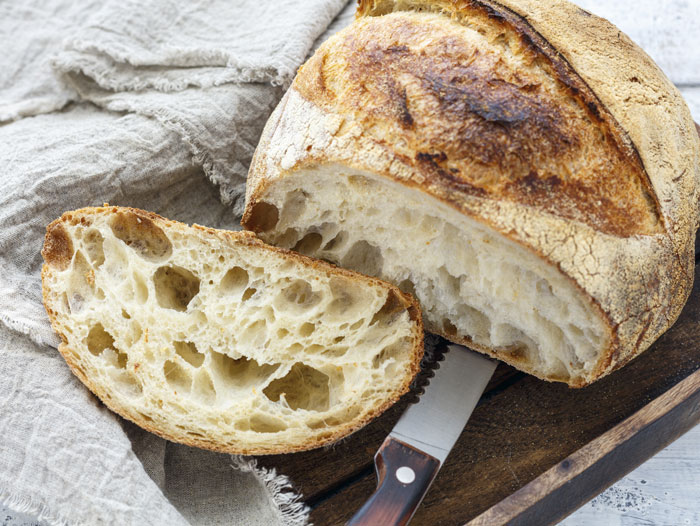What Makes Those Pandemic-Era Sourdoughs So Deliciously, Uniquely, Sour?
August 16, 2023 | 1 min to read
In San Francisco, researchers revealed the unique flavor profile of local sourdough bread by identifying 21 key chemical compounds. This bread, relying on a living "starter" of bacteria and wild yeast instead of commercial yeast, has a rich history dating back to ancient Egypt. The city’s foggy climate enhances the fermentation process, contributing to its distinct taste and smell. These findings will be presented at the ACS Fall 2023 meeting.

SAN FRANCISCO — A few years ago, amid lockdown boredom, it seemed like everyone was perfecting their sourdoughs. A simple, fermented mixture of flour and water, the bread is powered by microbes that provide its one-of-a-kind tangy flavor. For over a hundred years, sourdough bread has been synonymous with San Francisco, where today, scientists will report that they’ve identified and quantified 21 key chemical compounds that make this bread taste and smell so unique. They’ve also compared the levels of the compounds in different breads.
The researchers will present their results at the fall meeting of the American Chemical Society (ACS). ACS Fall 2023 is a hybrid meeting being held virtually and in-person Aug. 13–17, and features about 12,000 presentations on a wide range of science topics.
Sourdough breads have existed for centuries, dating back to ancient Egypt — well before they hit their recent peak of popularity in 2020. Unlike other wheat or white breads, which often rely on baker’s yeast to rise, sourdough breads use a “starter” — a living colony of bacteria and wild yeast that causes the bread’s dough to rise through fermentation. Since the microbes come from the air of the local environment, certain places are reportedly home to the best loaves. For example, San Francisco’s unique foggy climate is said to help make its sourdoughs so famously delicious.
To read the rest of the story, please go to: American Chemical Society
